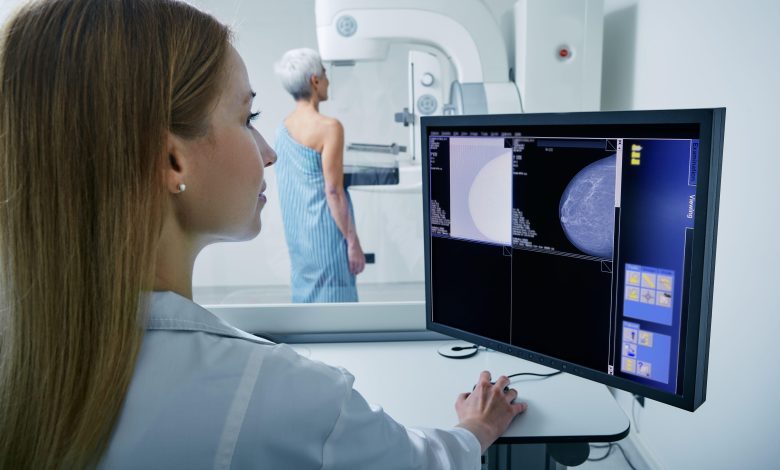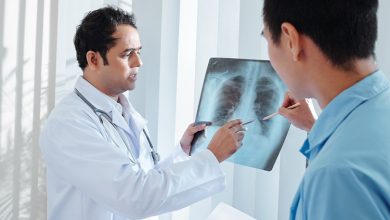Breast Cancer Survival: The Crucial Role of Early Detection

Breast cancer remains one of the most significant health challenges facing women worldwide, affecting millions each year. Yet amid the fear and uncertainty that often accompany a diagnosis, there is one undeniable truth that continues to save lives: early detection dramatically improves survival rates. With modern diagnostic tools, increased awareness, and proactive screening, more people are surviving breast cancer than ever before.
Why early detection is so vital to survival, how it works, what methods are most effective, and what steps individuals can take to protect themselves and their loved ones.
Understanding Breast Cancer
c begins when abnormal cells in the breast grow uncontrollably, forming a tumor. These cancerous cells can invade nearby tissues or spread (metastasize) to other parts of the body, such as the lungs, liver, bones, or brain.
While breast cancer primarily affects women, men can also develop it, albeit at a much lower rate—roughly 1% of all breast cancer cases occur in men.
There are several types of breast cancer, categorized based on where they begin and how they behave. Some of the most common include:
- Ductal Carcinoma In Situ (DCIS): A non-invasive cancer confined to the milk ducts.
- Invasive Ductal Carcinoma (IDC): Cancer that starts in the milk ducts and spreads to surrounding breast tissue.
- Invasive Lobular Carcinoma (ILC): Begins in the lobules (milk-producing glands) and can spread to nearby tissues.
- Triple-Negative Breast Cancer (TNBC): Lacks three common receptors, making it harder to treat but often detected earlier due to aggressive behavior.
Understanding these variations highlights why early detection—before the disease spreads—is crucial. The earlier breast cancer is found, the more treatment options are available and the better the prognosis.
The Power of Early Detection
Why Early Detection Matters
Breast cancer is often treatable when found early. In fact, the five-year survival rate for localized breast cancer (cancer that hasn’t spread beyond the breast) is over 99%, according to the American Cancer Society. However, once the cancer spreads to distant parts of the body, survival drops significantly, to around 30%.
The stark contrast in these numbers underscores the power of early diagnosis. Early detection allows doctors to remove tumors before they metastasize, administer less aggressive treatments, and preserve the patient’s quality of life.
How Early Detection Improves Treatment Outcomes
- Smaller Tumors, Easier Treatment
When detected early, tumors are typically smaller and confined to the breast. These are easier to remove surgically and may not require extensive chemotherapy or radiation. - More Treatment Options
Early-stage breast cancer gives patients and doctors more flexibility. Options may include lumpectomy (breast-conserving surgery), targeted therapy, or hormone therapy—approaches that are less physically taxing. - Higher Survival Rates
Numerous studies show that women who undergo regular mammograms or screening have significantly higher survival rates than those diagnosed at later stages. - Better Quality of Life
Detecting breast cancer early often means fewer physical and emotional burdens. Treatments are less invasive, recovery is faster, and the chance of recurrence is reduced.
Methods of Early Detection
1. Mammography
Mammography remains the gold standard for early breast cancer detection. This specialized X-ray can reveal tumors too small to be felt during a physical exam.
- Who Should Get It?
The American Cancer Society recommends that women aged 45 to 54 get annual mammograms, while those 55 and older can switch to every two years (or continue annually). Women at higher risk—such as those with a family history of breast cancer—may begin screening earlier. - Effectiveness
Mammography can detect 80–90% of breast cancers in women without symptoms, making it the most powerful tool for early intervention.
2. Breast Self-Examination (BSE)
While self-exams are no longer officially recommended as a standalone screening method, they remain a useful way for women to become familiar with their bodies. Knowing how your breasts normally look and feel helps detect any unusual changes—such as lumps, thickening, or discharge—that warrant medical attention.
3. Clinical Breast Examination (CBE)
Performed by a healthcare professional, a CBE involves visually inspecting and manually feeling the breasts and underarm areas for abnormalities. While not as sensitive as mammography, it can complement other screening methods and identify palpable masses.
4. Breast MRI and Ultrasound
- MRI (Magnetic Resonance Imaging): Recommended for women at high risk due to genetics or prior radiation exposure. MRI is highly sensitive but not used for routine screening because it can produce false positives.
- Ultrasound: Often used alongside mammography to evaluate suspicious areas or dense breast tissue where mammograms may be less effective.
5. Genetic Testing
Mutations in genes such as BRCA1 and BRCA2 dramatically increase breast cancer risk. Women with strong family histories may consider genetic counseling and testing to determine their risk and explore preventive measures.
The Role of Awareness and Education
Raising awareness is just as important as having advanced medical tools. Many women still skip regular screenings due to fear, lack of access, or misinformation.
Barriers to Early Detection
- Cultural Stigma and Fear
In some societies, discussing breast health remains taboo. Fear of a cancer diagnosis also discourages many from seeking screening. - Limited Access to Healthcare
In low- and middle-income countries, mammography equipment and trained radiologists are scarce. As a result, women are often diagnosed only when symptoms appear—when the disease is already advanced. - Misinformation and Myths
Myths such as “a lump always means cancer” or “mammograms cause cancer” prevent people from getting tested. Education can dispel these misconceptions.
Empowering Through Education
Awareness campaigns like Breast Cancer Awareness Month have been instrumental in changing public perception. These initiatives encourage women to schedule mammograms, understand their risk factors, and advocate for their health.
Schools, workplaces, and community programs can play vital roles in promoting education, teaching self-exam techniques, and making screening more accessible.
Risk Factors and Prevention
While some risk factors are uncontrollable, others can be managed to lower breast cancer risk.
Uncontrollable Risk Factors
- Gender and Age: Women and individuals over 40 are at higher risk.
- Family History and Genetics: BRCA1/BRCA2 mutations can increase risk up to 80%.
- Hormonal Factors: Early menstruation or late menopause exposes the body to estrogen longer.
Controllable Risk Factors
- Maintain a Healthy Weight: Obesity, especially after menopause, increases risk.
- Exercise Regularly: Physical activity reduces estrogen levels and strengthens immunity.
- Limit Alcohol: Even moderate drinking can raise breast cancer risk.
- Avoid Smoking: Smoking introduces carcinogens that damage DNA.
- Breastfeed if Possible: Breastfeeding has been linked to a reduced risk of breast cancer.
Preventive strategies work best when combined with regular screening, allowing for both proactive health management and early detection.
How Early Detection Saves Lives: Real-World Impact
Statistical Evidence
According to data from the World Health Organization (WHO):
- Early detection combined with effective treatment can reduce breast cancer deaths by up to 40%.
- In the United States, mortality from breast cancer has declined by over 40% since 1990, largely due to widespread screening and improved therapy.
- Women diagnosed at Stage 0 or I have a five-year survival rate of 99%, while those diagnosed at Stage IV have a survival rate of around 30%.
Stories of Survival
Behind these numbers are countless stories of courage. Many breast cancer survivors credit routine screening for saving their lives. For instance:
- Early Diagnosis, Full Recovery: Women diagnosed through annual mammograms often undergo lumpectomies and return to normal life with minimal disruption.
- Late Diagnosis, Harder Fight: Those who delay screenings often face more aggressive treatment, including mastectomy and chemotherapy, with lower survival odds.
These cases emphasize a vital truth: finding cancer early is the single most powerful factor in surviving it.
Advancements in Early Detection Technology
The last decade has witnessed groundbreaking progress in breast cancer diagnostics, making detection faster, more accurate, and less invasive.
1. 3D Mammography (Tomosynthesis)
Unlike traditional 2D mammography, 3D mammography takes multiple images from different angles, providing a more detailed view of breast tissue. It’s especially effective for women with dense breasts, reducing false positives and detecting cancers earlier.
2. Artificial Intelligence (AI) in Screening
AI-powered algorithms are now being used to analyze mammograms, identifying subtle patterns that human eyes might miss. Early studies show that AI can increase detection accuracy and reduce diagnostic errors, offering hope for faster and more reliable results.
3. Liquid Biopsies
This emerging technology detects cancer-related DNA fragments circulating in the blood. Though still under research, it could one day enable non-invasive, early detection of breast cancer through a simple blood test.
4. Molecular Imaging
Techniques like PET scans and contrast-enhanced mammography allow doctors to identify cancerous changes at the cellular level before tumors form. These technologies represent the future of early breast cancer detection.
Global Challenges and the Path Forward
Despite progress, the benefits of early detection are not shared equally across the globe. In many developing nations, late diagnosis remains the norm due to limited access to healthcare infrastructure.
Bridging the Gap
Efforts to make breast cancer screening accessible and affordable are crucial. Mobile mammography units, telemedicine consultations, and public health initiatives are making strides in underserved areas.
International organizations such as WHO and Breast Cancer Now are pushing for policies that support early detection through education, funding, and community outreach.
The Role of Governments and Healthcare Systems
Governments must prioritize national screening programs and fund awareness campaigns. Insurance coverage for mammograms, free screening camps, and subsidies for diagnostic tools can make a life-saving difference.
A Call to Action: What You Can Do Today
Every individual has a role to play in promoting early detection. Here’s how you can take action:
- Schedule Regular Screenings: Follow your doctor’s advice based on your age and risk factors.
- Know Your Family History: Share genetic risks with your healthcare provider to determine if early or more frequent screening is necessary.
- Stay Informed: Learn about the latest detection methods and share accurate information within your community.
- Support Awareness Campaigns: Participate in or donate to organizations that promote early breast cancer detection.
- Encourage Loved Ones: Remind family and friends—especially women over 40—to get screened regularly.
Conclusion
Early detection remains the cornerstone of breast cancer survival. Through timely screening, awareness, and education, lives are being saved every day. The message is clear: when breast cancer is found early, it is highly treatable.
As technology advances and awareness spreads, more people can look forward to positive outcomes—even in the face of a breast cancer diagnosis. The power to change the narrative lies in our hands: staying informed, getting screened, and encouraging others to do the same.




